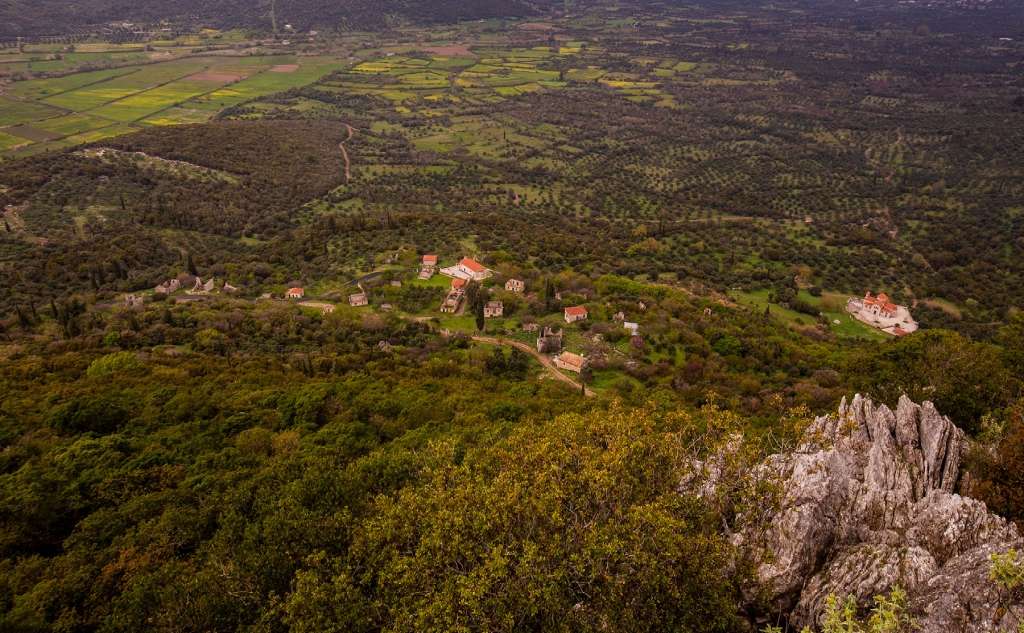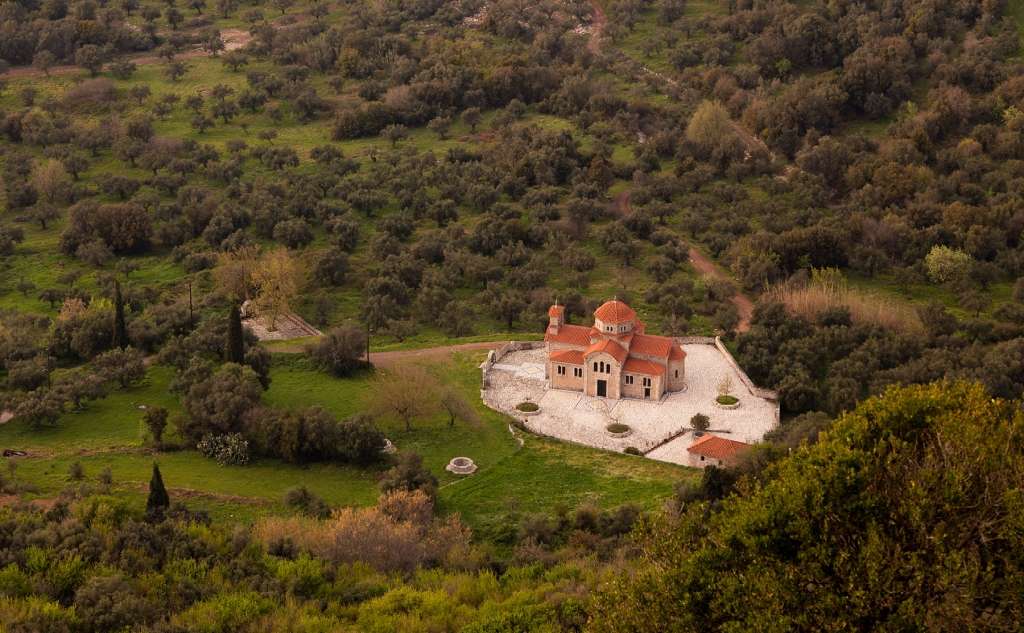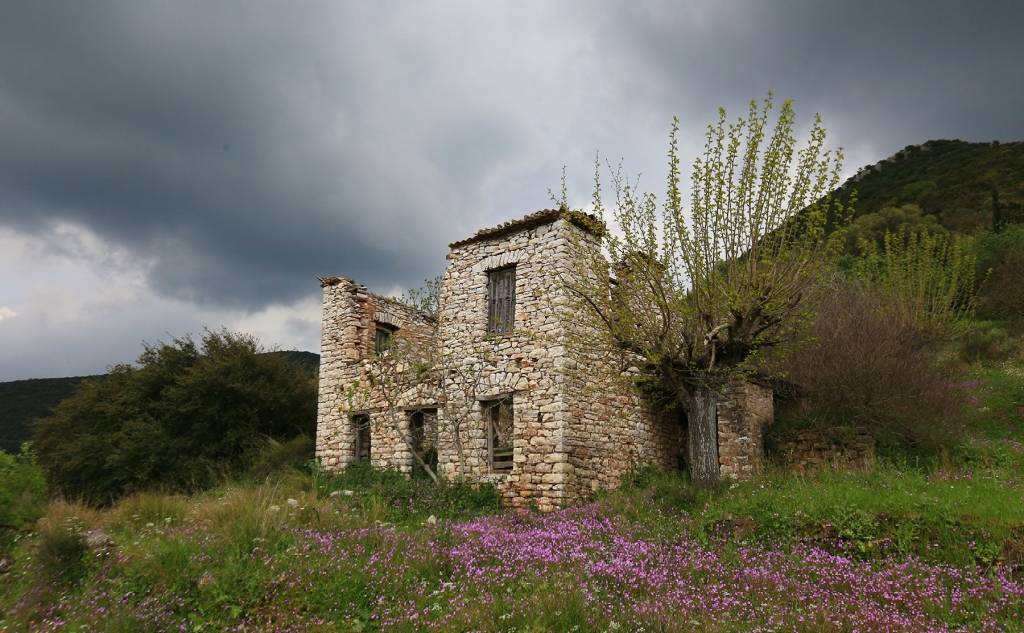







The lowland village of Amphithea Dorio is built at an altitude of 270 metres in the area of Dorio (at a distance of only 2.9 kilometres) while it is 50 kilometres from Kalamata. Until 1960, the village’s name was Klesoura or Klesoria due to its location in the narrow pass between mountains. The fort site was built in the 14th century by Arvanites who settled in the area.
During the Byzantine period, ruins of a Byzantine settlement were found at the "Mousga Voglia" location, as well as an underground water transportation system from the homonymous fountain and reservoir in the village. Several Byzantine coins were also found, as well as some Medieval houses. Abundant Medieval ruins are also found at the "Loutro" and "Keramideza" sites.
The village's original location seems to have been today's Loutro. Shortly before the Revolution of 1821, its inhabitants relocated to the foothills of Mount Ai-Lias, at an altitude of 476 metres. Amphithea Doriou belonged to the so-called Soulimochoria. Its inhabitants, called Dredes, played a decisive role during the Greek Revolution, fighting bravely and providing great chieftains.
In the village, visitors can see the traditional, stone-built houses and the church of Agios Vasilios, as well as enjoy the view of the plain (from where the village got its name). In 1965, an earthquake in the area caused great destruction in Amphithea, so in 1973 most of the inhabitants went down around 1700 metres and closer to Dorio.
Today, there is no life in the village. In the past, on the day of Lambri (Easter Day), the inhabitants celebrated by dancing together "Bresilia", a dance unknown in the rest of Arvanitochoria (the villages that Arvanites inhabited). It is a dance of the Epirotikos rhythm that got its name from the "bres" (belt) that the dancers were holding.